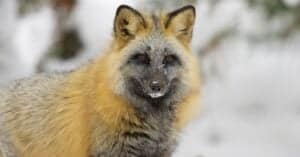The 10 Largest Foxes In The World
Foxes are omnivores that live on every continent except Antarctica. They are characterized by their triangular-shaped ears, pointed snout, and long bushy tail. Although only members of the genus Vulpes are true foxes, there are animals from a few other genera that are commonly called foxes because of their close resemblance to them. These are generally still accepted as being foxes and are called “false foxes”. Join us as we discover the largest foxes in the world, ranked by weight.
#10 Largest Fox: Cape Fox
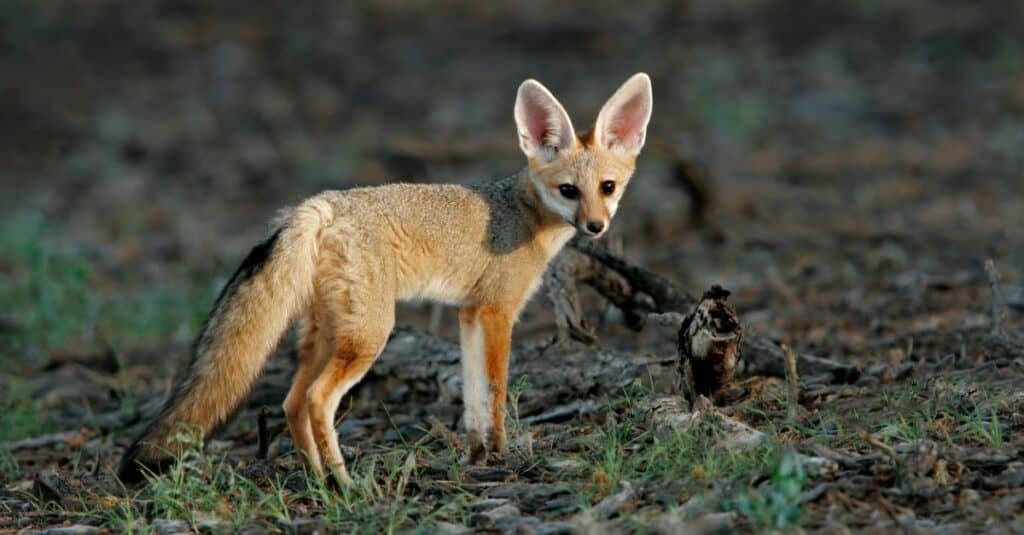
iStock.com/EcoPic
Cape foxes (vulpes chama) are true foxes and weigh between 5.5 and 10 pounds and stand 12 to 14 inches at the shoulder. They are the only foxes that are found south of the equator in Africa. Cape foxes are native to South Africa, Zimbabwe, and Botswana where they generally prefer grassland or lightly wooded regions. They are usually a silvery gray or fawn color with a black tipped tail, although their head is a reddish color and their jaw is dark brown. Although they are omnivores and eat some fruits, Cape foxes eat mainly rodents, birds, insects, and reptiles. However, Cape foxes do prey on livestock – predominantly young lambs. Predators of Cape foxes include lions and leopards, and kits are sometimes killed by honey badgers.
#9 Largest Fox: South American Gray Fox
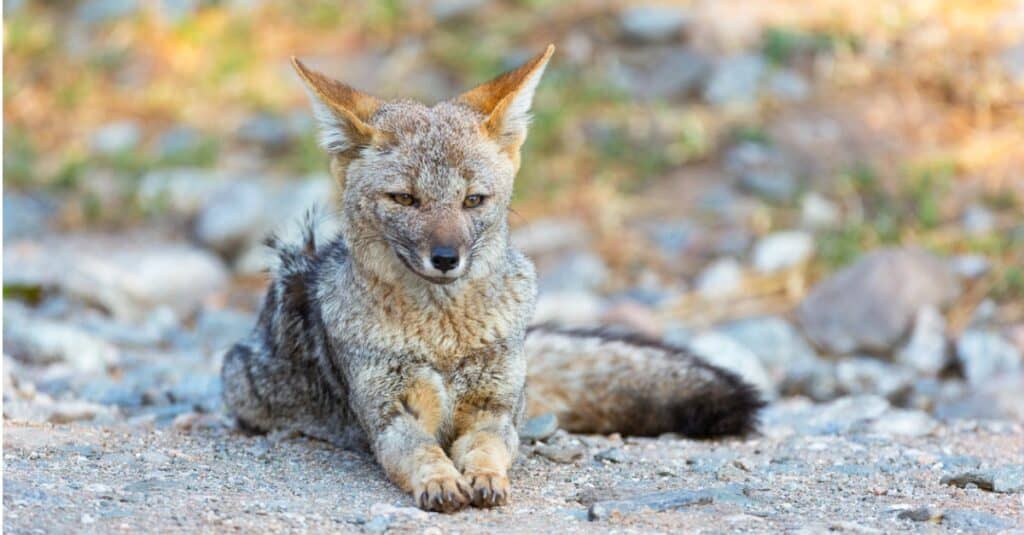
iStock.com/pablo_rodriguez_merkel
South American gray foxes (lycalopex griseus) are endemic to southern South America where they live either side of the Andes mountains. They live predominantly in Argentina and Chile in a range of habitats – from warm scrublands to cold forest regions.. They are slightly bigger than Cape foxes and weigh between 5 and 12 pounds. South American gray foxes are a mixture of gray and tawny color on their legs and bodies, while they have a reddish brown head. They eat a mixture of fruit, rodents, birds, birds eggs, arthropods, and small reptiles. They are often in competition with the much larger Culpeo fox which results in them losing out on the territories that have the best prey in.
#8 Largest Fox: Bat-Eared Fox
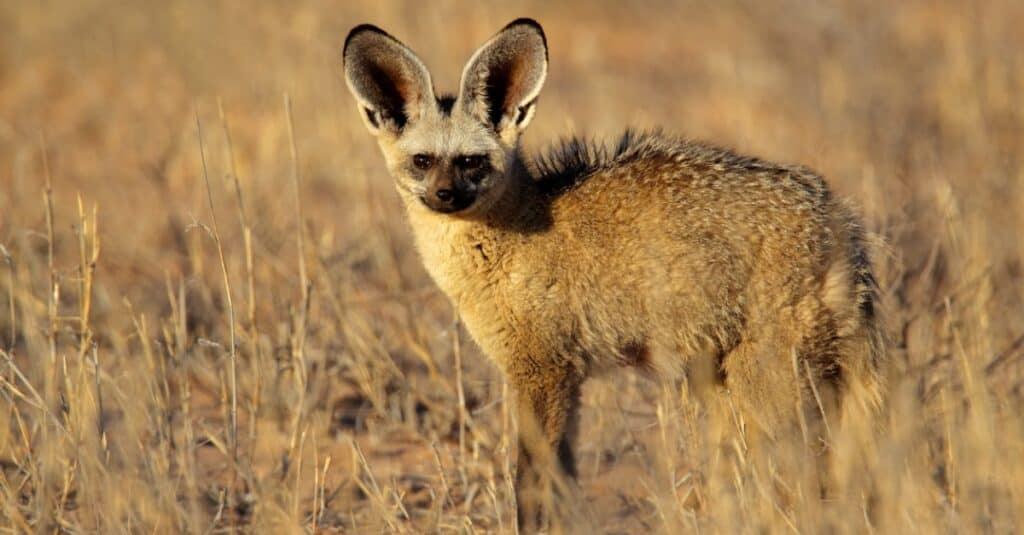
iStock.com/EcoPic
The only member of the Otocyon genus is the bat-eared fox. Bat-eared foxes weigh in between 6 and 12 pounds and are tan colored with dark legs. They are named for their extremely large ears which they use to regulate their body temperature with by thermoregulation. Bat-eared foxes live in eastern and southern Africa across Angola, Botswana, Ethiopia, Kenya, Namibia, Uganda, Sudan, South Africa, Somalia, and Zimbabwe. They prefer to live in short grassland which has been grazed by ungulates (zebra, giraffe etc), or sometimes in the edge of woodlands. Unlike most other foxes, bat-eared foxes prefer a diet of mostly insects – such as ants, beetles, grasshoppers, termites, and spiders. Bat-eared foxes make the most of their large ears and use them to find their prey using their hearing, rather than relying on sight or smell.
#7 Largest Fox: Tibetan Fox
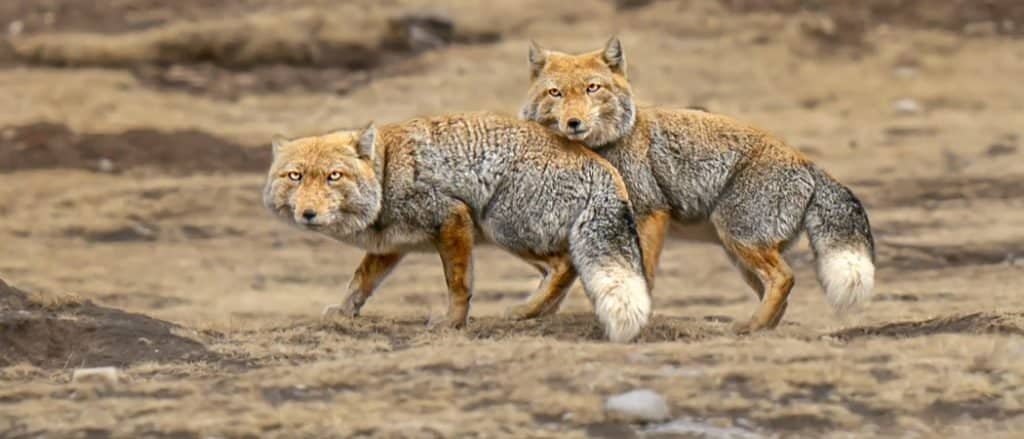
Wang LiQiang/Shutterstock.com
Weighing in at 8 to 12 pounds is the Tibetan fox. Tibetan foxes (vulpes ferrilata) are endemic to the Tibetan plateau in China and the Ladakh plateau in India. They prefer grasslands and hills at elevations between 11,500 and 17,100 feet. Tibetan foxes are usually tan or gray and sometimes have yellowish coloring on their back. They are noted for having a narrower muzzle and jaw that other foxes, but also longer canine teeth. Tibetan foxes prey on rodents, hares, lizards, Tibetan antelopes, plateau pikas, and musk deer. They also sometimes take livestock. Although many foxes are nocturnal, Tibetan foxes prefer to hunt during the daytime as pikas are diurnal. Mated pairs of Tibetan foxes often live and hunt together, and their kits also stay with them until they are around ten months old.
#6 Largest Fox: Crab-Eating Fox
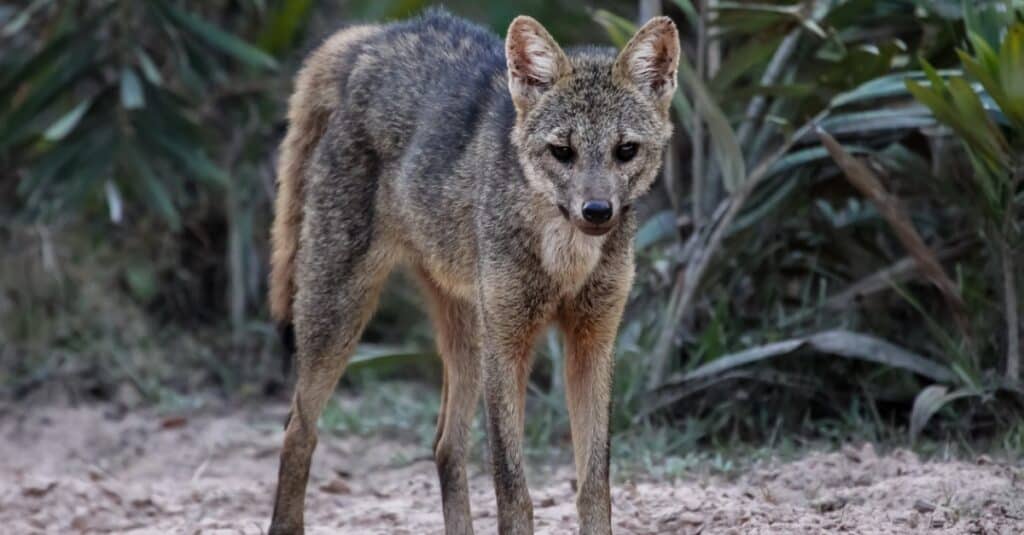
iStock.com/Uwe-Bergwitz
The only member of the Cerdocyon genus is the crab-eating fox. Crab-eating foxes are mainly greyish brown and weigh an average of 12 pounds. They live in the central region of South America in savannahs, forests, and woodland river banks. Crab-eating foxes are monogamous and the pair remain together to hunt and raise one or two litters per year. As their name suggests, crab-eating foxes eat a lot of crabs which they search for in the muddy floodplains. They also eat rodents, turtles, turtle eggs, crustaceans, lizards, and insects. However, their diet is determined by the season – they eat more crustaceans and crabs during the wet season, and more insects during the dry season.
#5 Largest Fox: Gray Fox
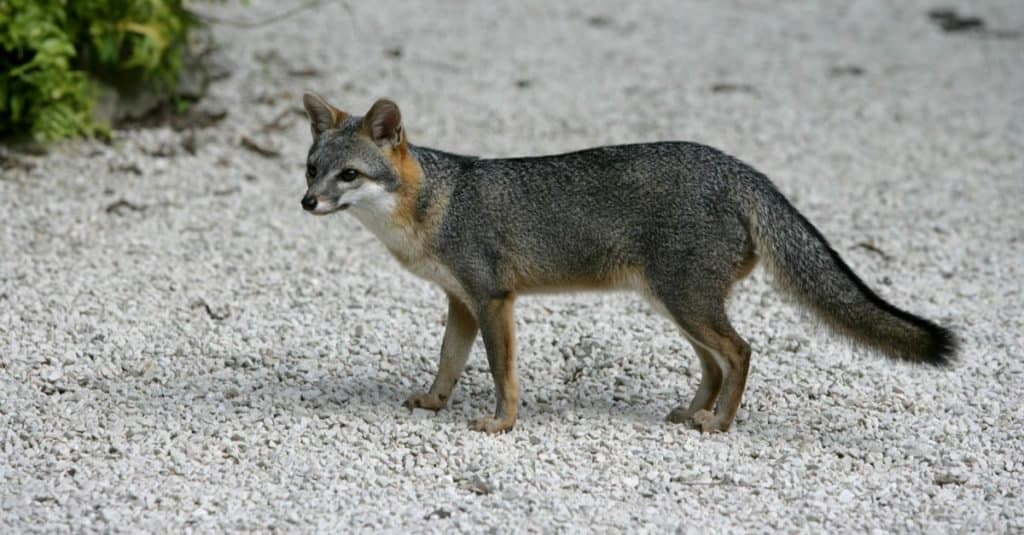
Erni/Shutterstock.com
Gray foxes (urocyon cinereoargenteus) live in Central and North America in rocky and wooded regions. They were originally the most common fox in the US, but, although they are still widespread, the red fox is now more common. Gray foxes weigh between 7 and 13 pounds and are gray with a black stripe down their tail and a black tip. Although they have the traditional fox-shaped ears and muzzle, they have longer and more curved claws which allow them to climb trees. They also have oval-shaped pupils instead of slit-shaped. Gray foxes are solitary hunters and prey on birds, rodents, voles, rabbits, and insects. Although they share much of the same habitat as coyotes and bobcats, those usually only prey on young gray foxes.
#4 Largest Fox: Pampas Fox
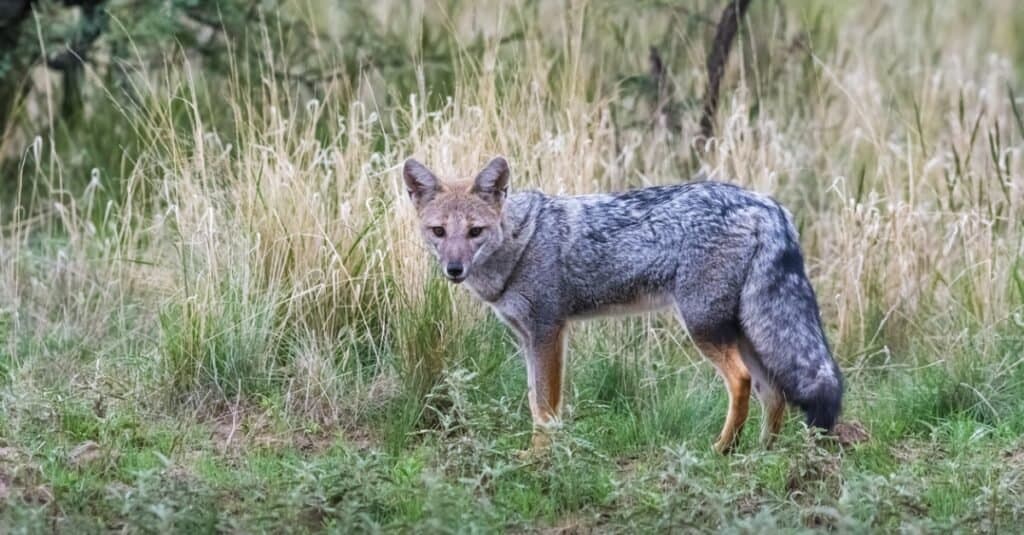
iStock.com/Foto4440
As their name suggests, pampas foxes (lycalopex gymnocercus) often reside in pampas grass, along with scrubland and wetland habitats. Pampas foxes weigh between 5 and 17 pounds. They are grey with a black stripe down their back and a white undercarriage. There are five subspecies of pampas foxes and they live in Argentina, Bolivia, Brazil, Uruguay, and Paraguay, although the location depends on which subspecies it is. Pampas foxes are solitary hunters and live a mostly solitary life, with the exception of forming monogamous pairs to breed and raise their young. Young kits are born between September and December every year and are weaned at two months old. Pampas foxes have a varied diet and are opportunistic predators. Their main predators are pumas and anacondas.
#3 Largest Fox: Arctic Fox
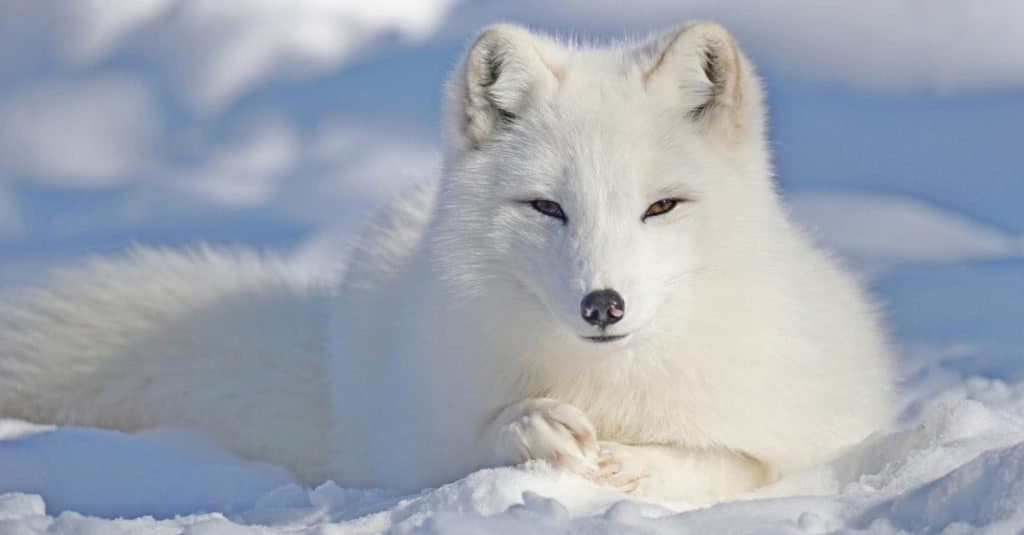
L-N/Shutterstock.com
One of the most distinctive foxes is the Arctic fox. Arctic foxes (vulpes lagopus) live in the Arctic regions of North America, north Asia, and Europe. They weigh up to 20 pounds and are easily recognized by their thick white fur which acts as the perfect camouflage in their snowy environment as well as keeping them warm. Arctic foxes live in one of the coldest environments in the world, but don’t even start to shiver until the temperature drops to -70°C. To endure such cold temperatures they curl up tightly and tuck their legs and head under their body and tail. This protects their most vulnerable and least insulated areas as well as creating a small surface area so that they lose less heat. Arctic foxes prey on any small animal that they can catch and their predators include polar bears and wolves.
#2 Largest Fox: Culpeo
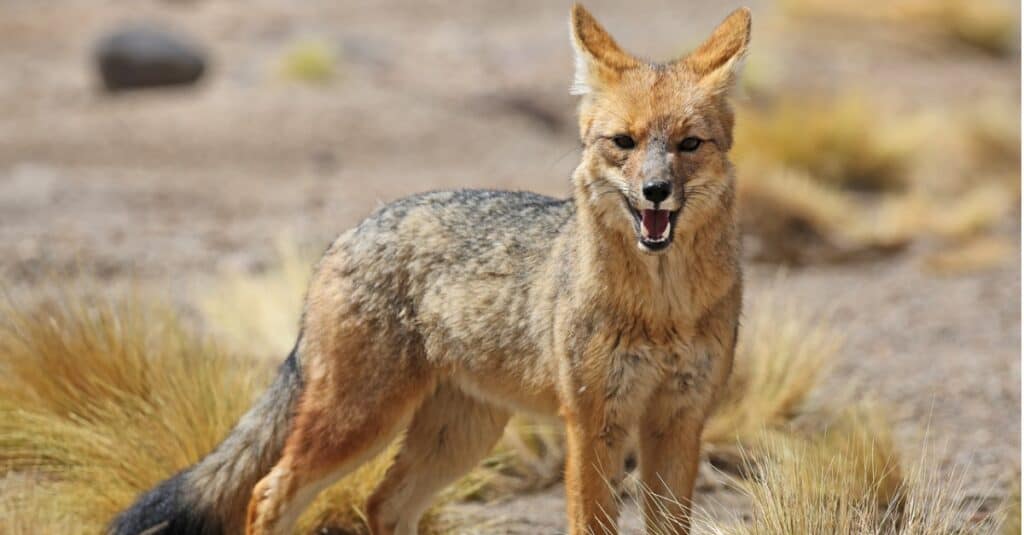
iStock.com/tane-mahuta
Culpeos (lycalopex culpaeus) are the second biggest fox and weigh up to 30 pounds. They live in western South America across a wide range of habitats, including deserts, rainforests, savannahs, and grasslands. However, they are frequently found on the western side of the Andes mountains, hence their other name – Andean fox. Culpeos are large and closely resemble the red fox with a reddish body and legs and a white chin. They are opportunistic predators and eat a range of rodents, birds, rabbits, and lizards. Culpeos also often prey on sheep and as a result they have sometimes been hunted or even poisoned.
#1 Largest Fox: Red Fox
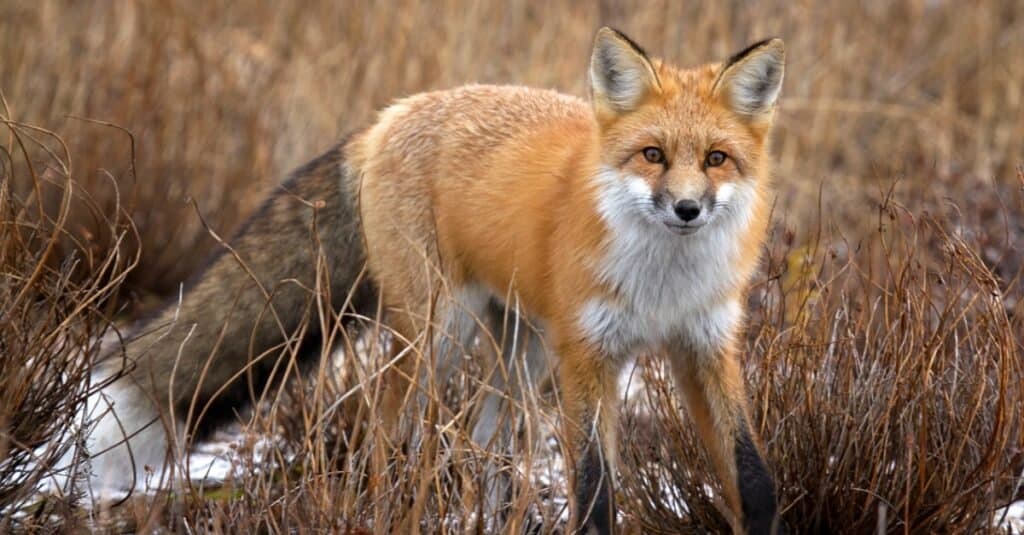
iStock.com/Lynn_Bystrom
The largest fox in the world is the red fox. Red foxes (vulpes vulpes) can weigh up to 31 pounds and stand up to 20 inches high at the shoulder. They are the most common and widespread of all foxes and there are currently around 47 subspecies of them. Red foxes are characterized by their reddish bodies and white chests. Red foxes have one of the largest ranges and are found across Europe, North America, Africa, Asia, and even as far north as the Arctic Circle. They are highly adaptable and live in a wide range of habitats. Red foxes breed once a year and give birth in the spring, with the average litter size being 4 to 6 kits. Like all other foxes, red foxes are omnivores and eat a wide range of fruit, insects, and animals depending on what is available in their location.
More from A-Z Animals
Foxes are omnivores that live on every continent except Antarctica. They are characterized by their triangular-shaped ears, pointed snout, and long bushy tail. Although only members of the genus Vulpes are true foxes, there are animals from a few other genera that are commonly called foxes because of their close resemblance to them. These are generally still accepted as being foxes and are called “false foxes”. Join us as we discover the largest foxes in the world, ranked by weight.
#10 Largest Fox: Cape Fox

iStock.com/EcoPic
Cape foxes (vulpes chama) are true foxes and weigh between 5.5 and 10 pounds and stand 12 to 14 inches at the shoulder. They are the only foxes that are found south of the equator in Africa. Cape foxes are native to South Africa, Zimbabwe, and Botswana where they generally prefer grassland or lightly wooded regions. They are usually a silvery gray or fawn color with a black tipped tail, although their head is a reddish color and their jaw is dark brown. Although they are omnivores and eat some fruits, Cape foxes eat mainly rodents, birds, insects, and reptiles. However, Cape foxes do prey on livestock – predominantly young lambs. Predators of Cape foxes include lions and leopards, and kits are sometimes killed by honey badgers.
#9 Largest Fox: South American Gray Fox

iStock.com/pablo_rodriguez_merkel
South American gray foxes (lycalopex griseus) are endemic to southern South America where they live either side of the Andes mountains. They live predominantly in Argentina and Chile in a range of habitats – from warm scrublands to cold forest regions.. They are slightly bigger than Cape foxes and weigh between 5 and 12 pounds. South American gray foxes are a mixture of gray and tawny color on their legs and bodies, while they have a reddish brown head. They eat a mixture of fruit, rodents, birds, birds eggs, arthropods, and small reptiles. They are often in competition with the much larger Culpeo fox which results in them losing out on the territories that have the best prey in.
#8 Largest Fox: Bat-Eared Fox

iStock.com/EcoPic
The only member of the Otocyon genus is the bat-eared fox. Bat-eared foxes weigh in between 6 and 12 pounds and are tan colored with dark legs. They are named for their extremely large ears which they use to regulate their body temperature with by thermoregulation. Bat-eared foxes live in eastern and southern Africa across Angola, Botswana, Ethiopia, Kenya, Namibia, Uganda, Sudan, South Africa, Somalia, and Zimbabwe. They prefer to live in short grassland which has been grazed by ungulates (zebra, giraffe etc), or sometimes in the edge of woodlands. Unlike most other foxes, bat-eared foxes prefer a diet of mostly insects – such as ants, beetles, grasshoppers, termites, and spiders. Bat-eared foxes make the most of their large ears and use them to find their prey using their hearing, rather than relying on sight or smell.
#7 Largest Fox: Tibetan Fox

Wang LiQiang/Shutterstock.com
Weighing in at 8 to 12 pounds is the Tibetan fox. Tibetan foxes (vulpes ferrilata) are endemic to the Tibetan plateau in China and the Ladakh plateau in India. They prefer grasslands and hills at elevations between 11,500 and 17,100 feet. Tibetan foxes are usually tan or gray and sometimes have yellowish coloring on their back. They are noted for having a narrower muzzle and jaw that other foxes, but also longer canine teeth. Tibetan foxes prey on rodents, hares, lizards, Tibetan antelopes, plateau pikas, and musk deer. They also sometimes take livestock. Although many foxes are nocturnal, Tibetan foxes prefer to hunt during the daytime as pikas are diurnal. Mated pairs of Tibetan foxes often live and hunt together, and their kits also stay with them until they are around ten months old.
#6 Largest Fox: Crab-Eating Fox

iStock.com/Uwe-Bergwitz
The only member of the Cerdocyon genus is the crab-eating fox. Crab-eating foxes are mainly greyish brown and weigh an average of 12 pounds. They live in the central region of South America in savannahs, forests, and woodland river banks. Crab-eating foxes are monogamous and the pair remain together to hunt and raise one or two litters per year. As their name suggests, crab-eating foxes eat a lot of crabs which they search for in the muddy floodplains. They also eat rodents, turtles, turtle eggs, crustaceans, lizards, and insects. However, their diet is determined by the season – they eat more crustaceans and crabs during the wet season, and more insects during the dry season.
#5 Largest Fox: Gray Fox

Erni/Shutterstock.com
Gray foxes (urocyon cinereoargenteus) live in Central and North America in rocky and wooded regions. They were originally the most common fox in the US, but, although they are still widespread, the red fox is now more common. Gray foxes weigh between 7 and 13 pounds and are gray with a black stripe down their tail and a black tip. Although they have the traditional fox-shaped ears and muzzle, they have longer and more curved claws which allow them to climb trees. They also have oval-shaped pupils instead of slit-shaped. Gray foxes are solitary hunters and prey on birds, rodents, voles, rabbits, and insects. Although they share much of the same habitat as coyotes and bobcats, those usually only prey on young gray foxes.
#4 Largest Fox: Pampas Fox

iStock.com/Foto4440
As their name suggests, pampas foxes (lycalopex gymnocercus) often reside in pampas grass, along with scrubland and wetland habitats. Pampas foxes weigh between 5 and 17 pounds. They are grey with a black stripe down their back and a white undercarriage. There are five subspecies of pampas foxes and they live in Argentina, Bolivia, Brazil, Uruguay, and Paraguay, although the location depends on which subspecies it is. Pampas foxes are solitary hunters and live a mostly solitary life, with the exception of forming monogamous pairs to breed and raise their young. Young kits are born between September and December every year and are weaned at two months old. Pampas foxes have a varied diet and are opportunistic predators. Their main predators are pumas and anacondas.
#3 Largest Fox: Arctic Fox

L-N/Shutterstock.com
One of the most distinctive foxes is the Arctic fox. Arctic foxes (vulpes lagopus) live in the Arctic regions of North America, north Asia, and Europe. They weigh up to 20 pounds and are easily recognized by their thick white fur which acts as the perfect camouflage in their snowy environment as well as keeping them warm. Arctic foxes live in one of the coldest environments in the world, but don’t even start to shiver until the temperature drops to -70°C. To endure such cold temperatures they curl up tightly and tuck their legs and head under their body and tail. This protects their most vulnerable and least insulated areas as well as creating a small surface area so that they lose less heat. Arctic foxes prey on any small animal that they can catch and their predators include polar bears and wolves.
#2 Largest Fox: Culpeo

iStock.com/tane-mahuta
Culpeos (lycalopex culpaeus) are the second biggest fox and weigh up to 30 pounds. They live in western South America across a wide range of habitats, including deserts, rainforests, savannahs, and grasslands. However, they are frequently found on the western side of the Andes mountains, hence their other name – Andean fox. Culpeos are large and closely resemble the red fox with a reddish body and legs and a white chin. They are opportunistic predators and eat a range of rodents, birds, rabbits, and lizards. Culpeos also often prey on sheep and as a result they have sometimes been hunted or even poisoned.
#1 Largest Fox: Red Fox

iStock.com/Lynn_Bystrom
The largest fox in the world is the red fox. Red foxes (vulpes vulpes) can weigh up to 31 pounds and stand up to 20 inches high at the shoulder. They are the most common and widespread of all foxes and there are currently around 47 subspecies of them. Red foxes are characterized by their reddish bodies and white chests. Red foxes have one of the largest ranges and are found across Europe, North America, Africa, Asia, and even as far north as the Arctic Circle. They are highly adaptable and live in a wide range of habitats. Red foxes breed once a year and give birth in the spring, with the average litter size being 4 to 6 kits. Like all other foxes, red foxes are omnivores and eat a wide range of fruit, insects, and animals depending on what is available in their location.


